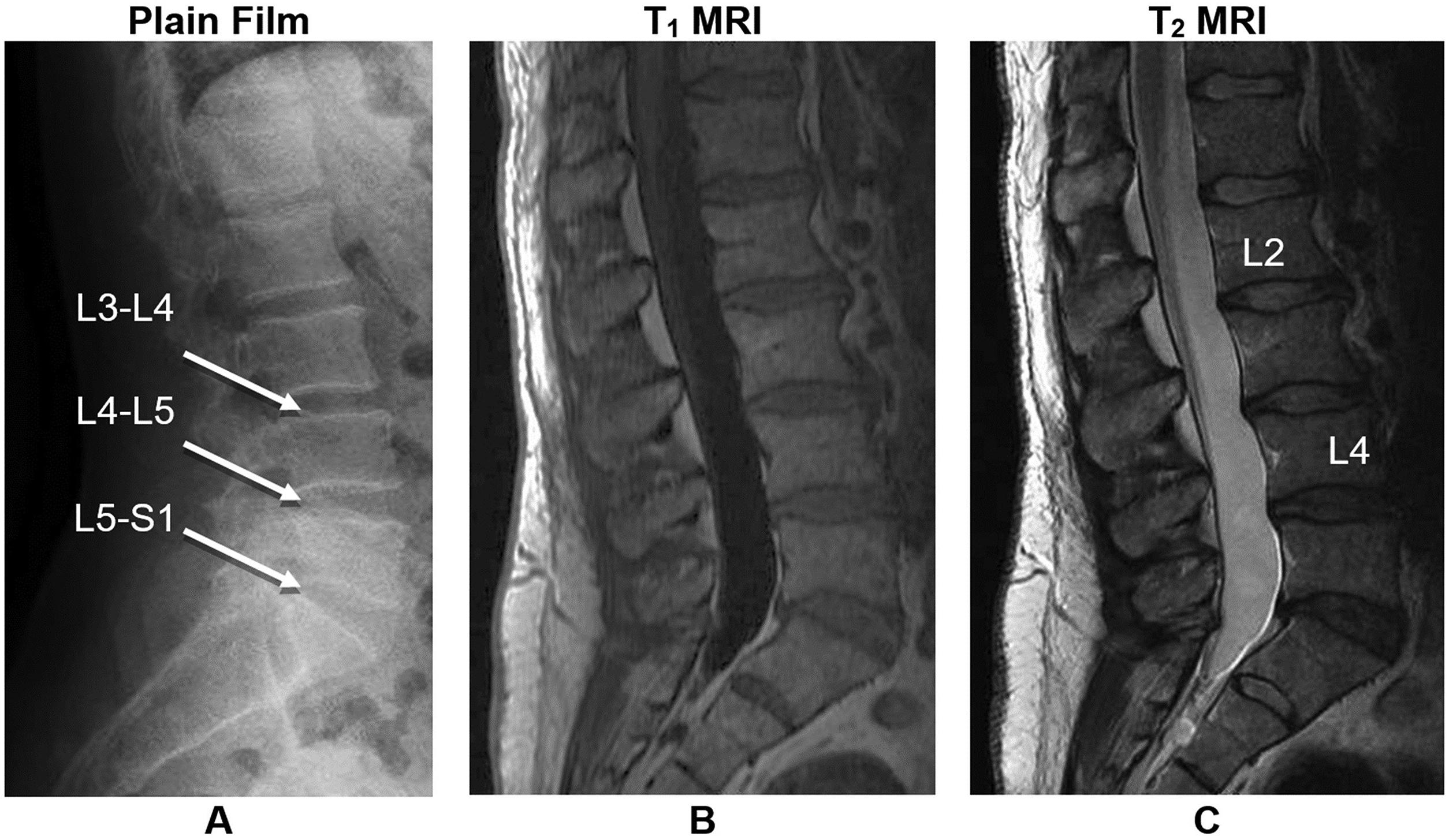Physical Address
304 North Cardinal St.
Dorchester Center, MA 02124
Various imaging modalities exist to assess the intervertebral disc.
Classification grading schemes have been proposed to assess the morphological and structural changes of the disc.
Novel or nontraditional imaging platforms have been developed to assess early disc changes, biochemical profiles of the disc and assist in identifying painful discs.
Clinical studies are needed to assess the efficacy of all imaging technologies in relation to identifying problematic discs, monitoring their profiles, and providing insight in clinical decision-making.
Research reported in this publication was supported by the National Institute of Biomedical Imaging and Bioengineering of the National Institutes of Health under award Number P41EB015893.
Low back pain (LBP) is one of the most common reasons for all physician visits in the United States [ ] with an estimated annual direct/indirect healthcare costs of over $100 billion USD [ ]. The most common cause of LBP among adults is degeneration of the intervertebral disc (IVD) in the spine [ ] (see Chapter 1 ). Diagnostic imaging technologies for spinal discs can readily detect disc bulges, vertebral endplate changes, canal stenosis, and mild spondylolisthesis associated with normal aging [ , ] (see Chapter 6, Chapter 7, Chapter 8, Chapter 9, Chapter 10, Chapter 11 ). These methods are routinely utilized for surgical planning and to categorize patients into those with nerve root pain (radiculopathy) or spinal pathology such as stenosis, or another specific spinal cause such as a tumor or infection. However, the majority of chronic low back pain patients fall into the third category of nonspecific low back pain, where no specific pathology can be identified and advanced diagnostic imaging techniques do not improve outcomes [ ]. Unnecessary diagnostic imaging can lead to an unintended cascade of events initiated by a positive test that may produce more unexpected results. Either due to patient or physician anxiety, such a situation typically results in further ill-advised tests or surgical procedures that may cause avoidable adverse effects and morbidity [ ]. Hence, the current medical consensus recommends against the routine use of advanced imaging except in cases of suspected serious pathology, and when conservative care is unsuccessful [ , ].
Patient outcomes could be significantly improved by reducing unnecessary tests and unsuccessful treatments [ ]. To this end, there needs to be a paradigm shift from testing and treating late-stage spinal disc pathologies to techniques and methods that can detect the early changes, perhaps even biochemical changes, that are expected to occur before gross morphological changes are readily visible in routine diagnostic approaches. Information about the early-stage disease can also be used to measure treatment efficacy in clinical trials.
The following sections describe imaging approaches for the detection of disc pathology by reviewing morphological imaging techniques such as plain radiographs (X-ray), computed tomography (CT) imaging, and conventional magnetic resonance imaging (MRI) approaches. Then, the novel MRI-based methods that are sensitive to biochemical abnormalities of the disc are described. As these latter approaches could be used to monitor disease progression of the disc as well as gauge the effect of biological therapies, their potential as clinical imaging biomarkers is also discussed.
Radiographic imaging of the IVD is routinely used for the classification of surgical indications, erosion of the margins of the vertebral plates, degree of osteophyte formation, and narrowing of the disc space in clinical diagnoses [ ]. Imaging planes for initial screening in the clinic are typically in lateral or anteroposterior (A-P) directions to visualize the entire spine and to detect physical deformities in patients. This also facilitates a more quantitative approach by grading disc degeneration as described by Kellgren et al. [ ]. While MRI has replaced plain film radiography to visualize the IVD directly, grading schemes based on plain radiographs have certain advantages. X-ray technology is more widely available and more economical. Furthermore, radiography of the spine is routine for diagnostic or follow-up purposes and hence digital plain films are easily accessible for analysis [ ]. Additional information regarding the stage of disc degeneration (presence of clefts in the nucleus or fissures of the annulus, etc.) can be detected using a discogram, where a radio-opaque dye is injected into the discs [ ] and the resulting image is graded according to a scale ( Fig. 5.1 ). However, the lack of soft-tissue contrast and the requirement the injection of contrast, is a fundamental limitation of radiographic imaging and discogram approaches. Hence CT and MRI have become widely used for diagnosing IVD abnormalities, and the latter has become the most commonly used imaging modality in the diagnosis of degenerative disc disease (DDD) [ ].

Become a Clinical Tree membership for Full access and enjoy Unlimited articles
If you are a member. Log in here